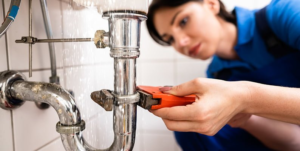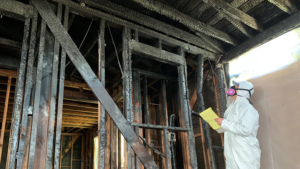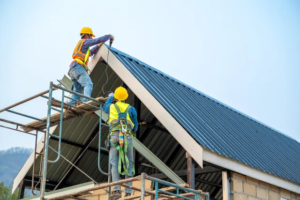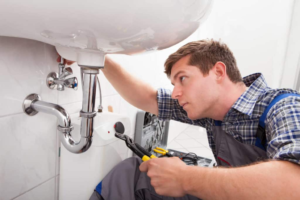Roofing Company Baton Rouge offers a full range of roof services, including repair, replacement and installation. They also offer gutter projects, storm damage inspections and other exterior services.

Insurance is crucial for a roofing business. It protects your company, employees and customers from property damage, injuries and lawsuits. It’s important to understand the types of insurance needed and how it works.
A roof is a vital part of your home. It protects you and your family from blazing sun, pounding rains and gusty winds. It also keeps snow and ice from damaging the structure. But as your roof ages, it eventually needs replacement. Choosing the right roofing company to replace your old roof is a crucial decision. There are many factors to consider, including reputation, cost and quality of materials. You can get recommendations from friends and family members or search online for reviews. You should also choose a roofing company that is licensed and insured.
A professional roofing contractor will set up protection on your property and start the tear-off process. They will then install the new materials. First, the felt paper or underlayment will be put down. This will help to keep water from seeping into the home through the gaps around chimneys and other openings. Next, the flashing will be installed. This will prevent water from leaking into the house through the valleys and other leak-prone areas of the roof. Finally, the tab shingles or other chosen material will be placed. This will complete the roof and give it a finished look.
The roofers will clean up and inspect the work for any issues. They will then remove the old materials and debris from your property. They will also remove any old vents and install new ones if you wish. Adding vents to your roof will help improve air circulation in the attic and can make your home more energy efficient.
If you have children, it’s best to have them stay at a friend’s house or with a babysitter while the roof is being worked on. The hammering and noise can be distracting to them, and they could easily step on a nail or other piece of debris. It’s also a good idea to move any outdoor toys or furniture away from the area, and cover them with tarps. You should also remove any wall hangings. The vibrations and impacts from the hammers can cause them to fall down and break.
Roof Repair
In many cases, a roofing company can repair a roof rather than replace it entirely. This option is generally less expensive and can be done sooner, saving homeowners money in the long run. It also allows you to preserve the overall structural integrity of the home, and it can extend the life of the roof in the meantime.
The first step in determining whether a roof can be repaired is to conduct a full inspection. This can be done from the inside of the house, or by looking at the ground beneath the roof. Look for water stains, mold growth and other signs of damage. If you see any, it’s a good idea to call a professional roofer right away.
During the inspection, the roofing contractor will check for any holes or other damage to the shingles and decking of the roof. They’ll also check for ice and water barriers along the valleys, and they’ll inspect the flashing, especially around chimneys, wood stove pipes, certain vents, and along hip roofs. They’ll replace any damaged shingle granules, and they’ll add new flashing to areas of the roof where it’s needed.
A roofing contractor will spend a couple of hours on your roof. They’ll roll up all the tarps, and they’ll sweep and blow the gutters clean of any nails or other debris that fell off the roof during the project. Once they’re done, the site will be completely cleaned up and it should be as if they were never there.
It’s important to note that if the roof is severely damaged, it may be better to replace it rather than repair it. A roof replacement will likely cost more than a repair, but it’s an investment that can extend the life of your roof for years to come.
A roof that is badly damaged can cause a lot of problems for your home, including leaking, mold, and low air quality. Mold in your home can lead to respiratory issues and health problems, so if you notice any mold or other signs of moisture intrusion in the interior of your house, it’s a good idea to contact a professional roofer immediately.
Roof Maintenance
Performing regular roof maintenance can help homeowners avoid expensive repair bills in the future. A well-maintained roof can protect the interior of a house and reduce the risk of water damage and mold growth. A roofing company will typically perform regular inspections and clean ups to keep a home’s roof in good condition.
During these visits, a roofing contractor will check the condition of shingles, gutters, downspouts, chimneys and vents, flashings, eaves, drip edges, underlayment, and other parts of the roof system. Roofing professionals will also look for signs of leaks or other problems. If a problem is found, it will be noted on the roof report and recommended for repairs.
If you live in a storm-prone area, it is important to have your roof inspected for damage after each major storm. These inspections can prevent small, easily repairable issues from becoming major problems in the future. In addition, many roofing material manufacturers require that a professional inspect the roof on a regular basis or after a severe weather event in order for the warranty to remain valid.
A reputable roofing company will be able to provide detailed written estimates that clearly show the full scope of work and materials needed. These estimates should also include a breakdown of all costs with no hidden fees. The company should have the proper insurance, bonding, and licensing to operate as a roofing contractor in your state. They should also have long standing relationships with manufacturers that allow them to offer strong warranties on shingles and workmanship.
A quality roofing company will have positive internet reviews and be open about their process. They will also be willing to negotiate the price of their services. They may have a sales person that will meet with you to discuss the project and answer any questions, as well as a job site manager who will interact with the crew on your behalf. This type of customer support will ensure that any issues you have are handled as quickly and effectively as possible. Ultimately, this will give you peace of mind that the job is being done correctly and that your roof will last for years to come.
Roof Installation
Roofers install both flat and pitched roof systems using materials like asphalt shingles and rubber. They can also handle foundation waterproofing and paver system installation. Their crews also work with other construction professionals to coordinate roofing tasks with other projects. For instance, a roofing company might include a team of carpenters to help with decking and siding as part of a larger roof repair or replacement project.
During the initial consultation, the roofer will discuss your goals and budget to create a custom roofing solution that fits your needs. They will then give you a detailed estimate and schedule for the project. During the installation process, they will make sure that the shingles are properly placed and sealed to prevent leaks. In addition, they will ensure that the flashing around the chimney, vents, and valleys are installed correctly to protect your home from water damage.
The roofer will then install any necessary skylights, vents, or other accessories as needed. For example, they may add a ridge vent to increase airflow and reduce the risk of mold and mildew. They can also install a drip edge to prevent rainwater from running down the sides of your home and damaging the siding.
While working on your roof, the roofer will use high-quality materials to ensure that it lasts for decades. They will also follow local building codes and safety guidelines to protect you and their workers. Look for a roofer with years of experience and strong regional roots to be sure that they will stand behind their work.
Beware of storm chasers, which are companies that travel to areas affected by bad weather and solicit homeowners for insurance claims. These companies usually provide rushed installation services that do not meet code requirements or modern standards. They might also use low-quality, generic shingles that will not hold up well against climate. Choose a reputable roofer that has a long history of local service and excellent customer feedback. They should also offer strong guarantees and warranties on shingles and labor. Make sure to read the fine print carefully to avoid hidden fees and charges.








